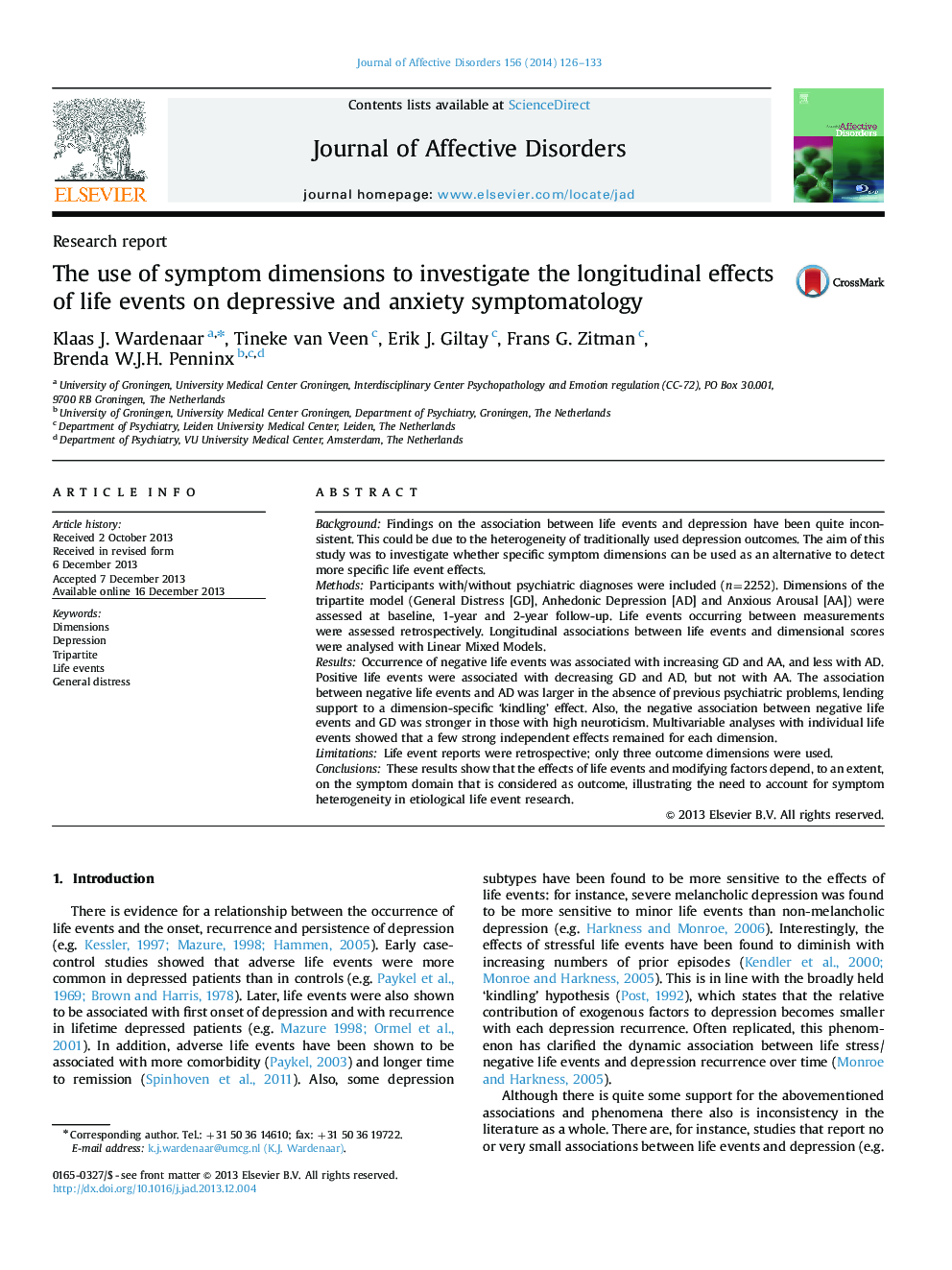| Article ID | Journal | Published Year | Pages | File Type |
|---|---|---|---|---|
| 6233817 | Journal of Affective Disorders | 2014 | 8 Pages |
BackgroundFindings on the association between life events and depression have been quite inconsistent. This could be due to the heterogeneity of traditionally used depression outcomes. The aim of this study was to investigate whether specific symptom dimensions can be used as an alternative to detect more specific life event effects.MethodsParticipants with/without psychiatric diagnoses were included (n=2252). Dimensions of the tripartite model (General Distress [GD], Anhedonic Depression [AD] and Anxious Arousal [AA]) were assessed at baseline, 1-year and 2-year follow-up. Life events occurring between measurements were assessed retrospectively. Longitudinal associations between life events and dimensional scores were analysed with Linear Mixed Models.ResultsOccurrence of negative life events was associated with increasing GD and AA, and less with AD. Positive life events were associated with decreasing GD and AD, but not with AA. The association between negative life events and AD was larger in the absence of previous psychiatric problems, lending support to a dimension-specific 'kindling' effect. Also, the negative association between negative life events and GD was stronger in those with high neuroticism. Multivariable analyses with individual life events showed that a few strong independent effects remained for each dimension.LimitationsLife event reports were retrospective; only three outcome dimensions were used.ConclusionsThese results show that the effects of life events and modifying factors depend, to an extent, on the symptom domain that is considered as outcome, illustrating the need to account for symptom heterogeneity in etiological life event research.
